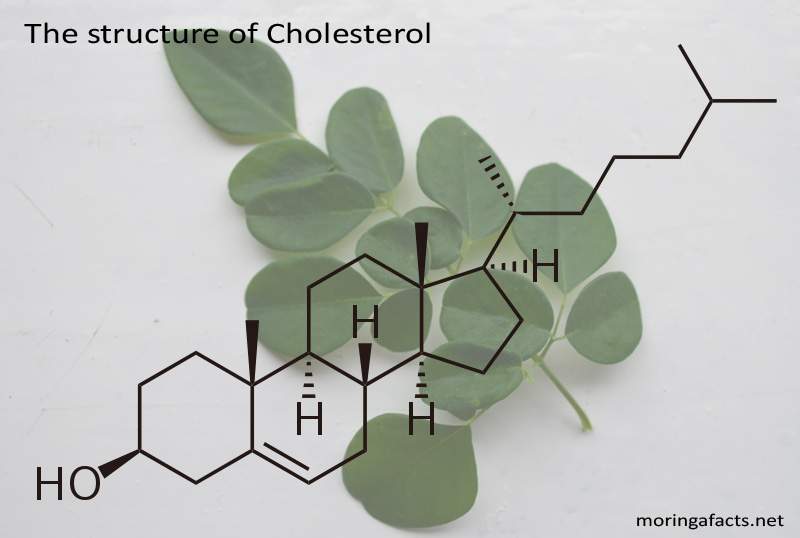Author – Dr. med. Danijela P.
It is well known that Moringa is a good source of good cholesterol which is known to protect against cardiovascular diseases. Let’s start with what cholesterol is and what it does.
Cholesterol is a type of fat that is essential for normal functioning of our body. Its origin is twofold. The highest percentage of cholesterol occurs in our bodies, thanks to the ability of liver cells that synthesize it. The cholesterol is an endogenous and makes 2/3 required cholesterol for normal functioning of our body. That would be roughly the amount of 800-900 mg / day. The remaining 1/3 (150-300 mg / day) required cholesterol is of exogenous origin, as it is entered from the environment to different foods. The need for cholesterol in children, in proportion to age, may be greater because of the period of growth and development.
Cholesterol enters the composition of the (building), all cell membranes in our body, the liver is essential for the formation of gall-or more precisely, bile salts, which are necessary for the digestion of fat in the intestines, into the timber of sex hormones, is essential in the process of absorption of soluble vitamins in fat (A, D, E, K). From the body is excreted by the highest percentage of bile, the urine less, and from women body by a small percentage of milk in breastfeeding mothers.
Like other fats and cholesterol are not soluble in water. Therefore, its transmission is performed through the body by binding to protein molecule (protein), forming a new compound – lipoprotein. In this manner allows the transport of cholesterol through the body. Depending on the mutual relations of fat (lipid) and protein, there are a few types of lipoproteins, with more lipids from lipoproteins have a lower density. The types of lipoproteins are:
- Chylomicrons: have the largest diameter and lowest density of molecules (contain the highest percentage of triacylglycerols)
- VLDL (Very Low Density Lipoprotein) – very low density lipoproteins
- IDL (Intermediate Density Lipoprotein) – central lipoproteins (transition) density
- LDL (Low Density Lipoprotein) – the so-called low density lipoprotein, “bad cholesterol”.
- HDL (High Density Lipoprotein) – the so-called high density lipoproteins. “Good cholesterol”.
The blood cholesterol may be free or esterified (bound to fatty acid molecule). Esterification process takes place due to the presence of an enzyme (lecithin cholesterol LHAT-acetyltransferase). If the smaller amount of this enzyme, there is an increase in cholesterol.
Cholesterol levels can be increased due to: genetic predisposition, unhealthy and unbalanced diet, insufficient physical activity, smoking, from the application of contraceptives or anabolic.
The reduced value is given by the reduced function of the thyroid gland, in diseases where there is severe damage to the liver such as cirrhosis and severe long-term inflammation of the liver, with malnutrition, anemia and in case of longer taking medications such as aspirin, estrogen, thyroid hormone.

